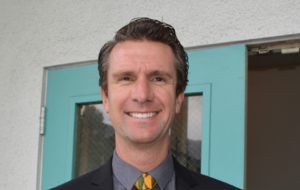In honor of Pride Month, I want to share my experience advocating for Ethnic Studies, an interdisciplinary field that empowers diverse and often marginalized voices. At a time when America is increasingly polarized, the field of Ethnic Studies has become a contentious topic that often pulls apart communities. As education leaders, our role is to persevere and to explain that it is not Ethnic Studies that is dividing us but a lack of empathy and understanding. The antidote to this division is Intersectional Ethnic Studies.
I have been a part of the development of Intersectional Ethnic Studies in two different school districts in Southern California. Both have supportive school boards and communities. The mild criticism that we encountered was that students needed to focus more on reading and math and less on culture. Once we sat with those concerned and they understood that incorporating Ethnic Studies does not compromise academic achievement but supports it, the naysayers became supporters.

However, recently I have watched the tide turn. Neighboring districts that adopted supportive and successful Ethnic Studies programs years ago are suddenly facing protests. The primary concern appears to center on the “Intersectional” part of Ethnic Studies, specifically the inclusion of the contributions of LBGTQ+ individuals. I am surprised to see this happening.
In California, our education code and content standards from 2012 specifically include “the role and contributions of both men and women, Native Americans, African Americans, Mexican Americans, Asian Americans, Pacific Islanders, European Americans, lesbian, gay, bisexual, and transgender Americans, persons with disabilities, and members of other ethnic and cultural groups, to the economic, political, and social development of California and the United States of America.” I do not know if there is a state with a friendlier and more supportive curriculum to advocate for the contributions from a diverse set of people. Yet here we are with renewed opposition.
Critics are attempting to paint those who teach the contributions of the LGBTQ+ community as having a subversive agenda. To that I say we do have an agenda, and here it is:
- Create schools that are safe places for all students, including LGBTQ+ identifying students and their families.
- Celebrate and educate ourselves and our students on the roles and contributions of various ethnic groups, men and women, LGBTQ+ individuals, people with various religious affiliations, and persons with disabilities.
- Center ourselves in our community histories and celebrate our local stories.
Finding an Inclusive Path
I am blessed that I am supported in my work as an education administrator. I value this gift and recognize this is not the same for everyone. For example, a superintendent in a nearby district says that if he ever uses the term “Ethnic Studies” it riles up the masses, so instead he talks about building places of belonging and affirmation for all students, sharing diverse and different perspectives in the classroom, and encouraging students to think independently. He is working towards the same goal but doing it with language that brings along his community. We all need to find the path towards inclusion in each of our own communities.
Our students, our schools, our communities, and our nation will be better if we can learn to see the world and our shared history through various lenses and perspectives. I once observed a teacher ask two students to come to the front of the room and face each other. In between the students, the teacher held a quarter with “heads” facing one student and “tails” facing the other student. He asked each student to describe what they saw. The students gave different descriptions of the exact same quarter.
The exercise reminded the class that there are two sides to every coin and multiple perspectives of the world and to understand the full picture we must explore them all. And just because we hear or read about someone describing something differently than how we witnessed it does not make their perspective false—it’s just a different side of the coin.
Teaching Ethnic Studies—diverse stories and worldviews different from our own—builds empathy, understanding, and knowledge, all of which our students need now. Let’s not give up but find a way to persist, knowing that one day we will all be able to see both sides of the same coin and truly understand each other.

